Do you have a question about the Yamaha Fino 125 and is the answer not in the manual?
Owner's responsibilities for safe and proper operation of the scooter.
Pre-operation checks, visibility, and riding techniques for safe operation.
Recommendations for safety gear including helmets, jackets, shoes, and gloves.
Precautions regarding exhaust fumes and ventilation to prevent poisoning.
Guidelines for safely adding accessories or cargo to the scooter.
Additional tips for safe riding, including signaling and cornering.
Guidelines for selecting and wearing motorcycle helmets correctly.
Overview of handlebar controls and instrument panel layout.
Functions and positions of the ignition and steering lock mechanism.
Explanation of dashboard indicator and warning lights.
Indication and action for the engine trouble warning light.
Description of the speedometer and odometer functions.
Functionality of switches on the left and right handlebars.
Operation and safety precautions for the sidestand.
Explanation of the sidestand switch's role in the ignition system.
Checks for operation, pads, fluid level, and hydraulic system.
Checks for operation, cable lubrication, and lever free play.
Checking wheels for damage and tires for condition, tread, and pressure.
Recommended procedures for engine break-in to ensure longevity.
Step-by-step guide for starting the engine safely.
Techniques for effective and safe braking, including on wet surfaces.
Comprehensive chart for routine maintenance and lubrication tasks.
Checking tire condition, tread depth, air pressure, and replacement recommendations.
Procedure for changing engine oil and checking level.
Procedure for changing final transmission oil.
Importance of checking and adjusting valve clearance.
Procedure for checking and adjusting tire air pressure.
Checking tires for wear, damage, and minimum tread depth.
Checking wear on front brake pads and rear brake shoes.
Procedure for checking and replenishing brake fluid level.
Service intervals for changing brake fluid and replacing seals/hoses.
Information on VRLA battery, maintenance, charging, and storage.
Procedure for replacing a blown fuse with the correct amperage.
General guide to diagnosing and resolving common vehicle problems.
Flowchart for quick diagnosis of fuel, battery, ignition, and compression issues.
Details on engine type, displacement, bore, stroke, and starting system.
Recommended engine oil type, grade, and quantity.
Recommended fuel type, octane rating, and tank capacity.
Owner's responsibilities for safe and proper operation of the scooter.
Pre-operation checks, visibility, and riding techniques for safe operation.
Recommendations for safety gear including helmets, jackets, shoes, and gloves.
Precautions regarding exhaust fumes and ventilation to prevent poisoning.
Guidelines for safely adding accessories or cargo to the scooter.
Additional tips for safe riding, including signaling and cornering.
Guidelines for selecting and wearing motorcycle helmets correctly.
Overview of handlebar controls and instrument panel layout.
Functions and positions of the ignition and steering lock mechanism.
Explanation of dashboard indicator and warning lights.
Indication and action for the engine trouble warning light.
Description of the speedometer and odometer functions.
Functionality of switches on the left and right handlebars.
Operation and safety precautions for the sidestand.
Explanation of the sidestand switch's role in the ignition system.
Checks for operation, pads, fluid level, and hydraulic system.
Checks for operation, cable lubrication, and lever free play.
Checking wheels for damage and tires for condition, tread, and pressure.
Recommended procedures for engine break-in to ensure longevity.
Step-by-step guide for starting the engine safely.
Techniques for effective and safe braking, including on wet surfaces.
Comprehensive chart for routine maintenance and lubrication tasks.
Checking tire condition, tread depth, air pressure, and replacement recommendations.
Procedure for changing engine oil and checking level.
Procedure for changing final transmission oil.
Importance of checking and adjusting valve clearance.
Procedure for checking and adjusting tire air pressure.
Checking tires for wear, damage, and minimum tread depth.
Checking wear on front brake pads and rear brake shoes.
Procedure for checking and replenishing brake fluid level.
Service intervals for changing brake fluid and replacing seals/hoses.
Information on VRLA battery, maintenance, charging, and storage.
Procedure for replacing a blown fuse with the correct amperage.
General guide to diagnosing and resolving common vehicle problems.
Flowchart for quick diagnosis of fuel, battery, ignition, and compression issues.
Details on engine type, displacement, bore, stroke, and starting system.
Recommended engine oil type, grade, and quantity.
Recommended fuel type, octane rating, and tank capacity.
| Engine Type | Air cooled, 4-stroke, SOHC, 2-valve |
|---|---|
| Displacement | 125 cc |
| Bore x Stroke | 52.4 mm x 57.9 mm |
| Compression Ratio | 9.5:1 |
| Fuel System | Fuel Injection |
| Ignition System | TCI |
| Lubrication System | Wet Sump |
| Transmission | V-belt automatic |
| Frame Type | Underbone |
| Front Suspension | Telescopic fork |
| Rear Suspension | Unit swing |
| Rear Brake | Drum Brake |
| Seat Height | 745 mm |
| Ground Clearance | 135 mm |
| Fuel Tank Capacity | 4.2 L |
| Wet Weight | 98 kg |
| Maximum Power | 9.4 PS @ 8000 rpm |
| Maximum Torque | 9.6 Nm @ 5500 rpm |
| Starting System | Electric Start |
| Front Brake | Disc Brake |
| Wheelbase | 1260 mm |
| Overall Length x Width x Height | 1, 870 mm x 700 mm x 1, 066 mm |
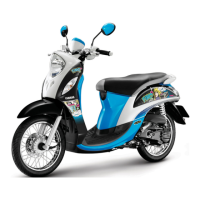
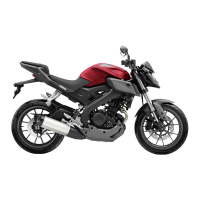


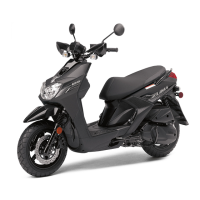
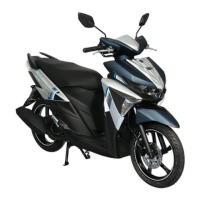
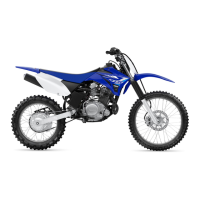




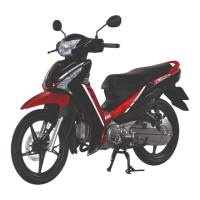
